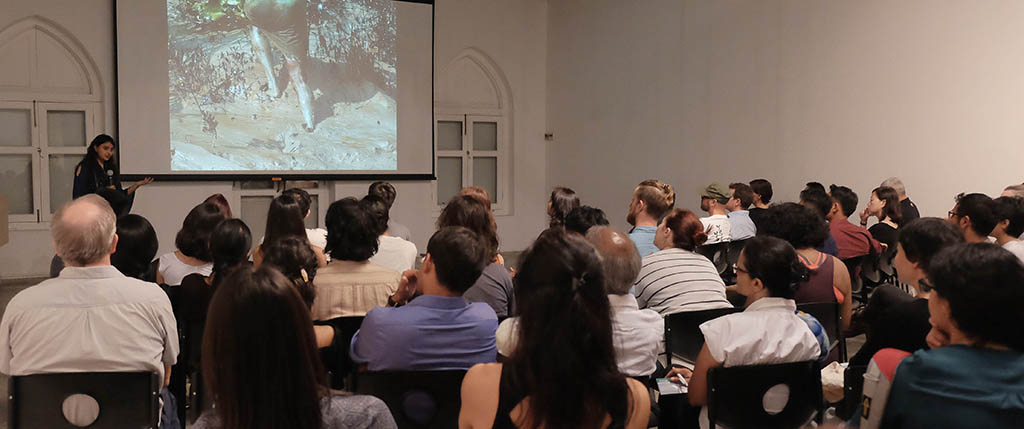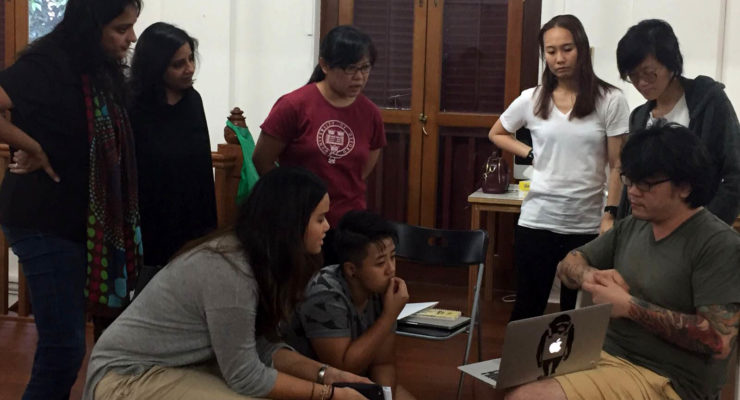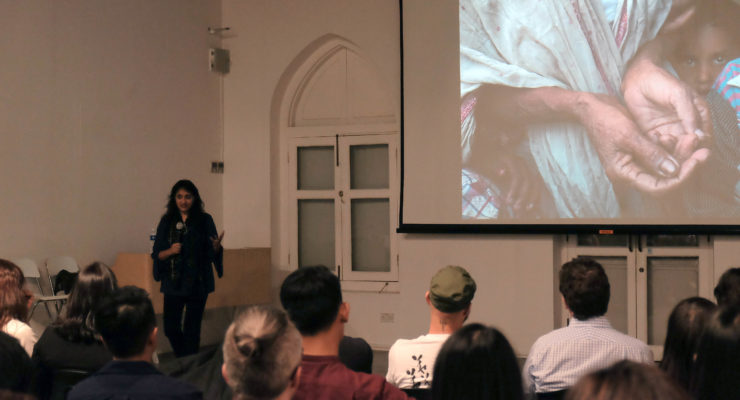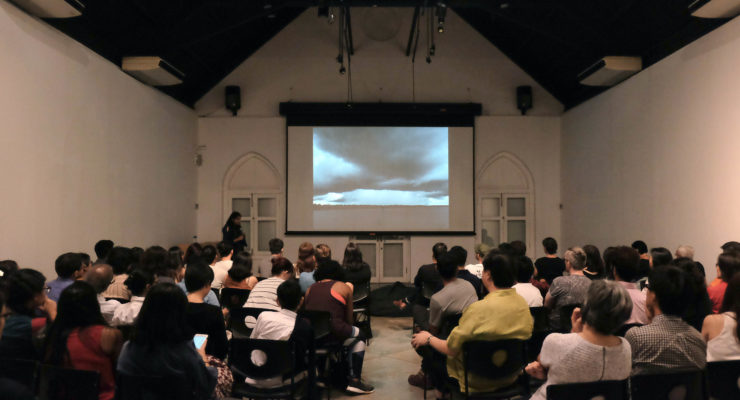Insights from environmental storyteller Arati Kumar-Rao's visit to Objectifs
Earlier this month, we welcomed Arati Kumar-Rao, an independent environmental photographer and writer based in India, to Objectifs. Arati gave a public lecture and taught a workshop on Visual Storytelling and Social Advocacy, as part of Stories That Matter 2017, Objectifs’ annual programme looking at critical issues in our world through photography and film.
Read on for insights from Arati’s lecture and workshop at Objectifs.
Arati Kumar-Rao is a self-taught photographer who, since 2014, has been documenting the “slow violence” of ecological degradation and climate change on ecosystems and livelihoods along South Asia’s rivers. Quoting Rob Nixon, she explained that “slow violence” is “low in instant spectacle but high in long-term effects”. “Slow violence” is more subtle, affecting people over generations. As it is less gripping than the graphic content from around the world that confronts us daily, it is not as well covered by mainstream media.
“Find what you care about, and go deep”
Arati had straightforward advice on picking a topic: “Find what you care about, and go deep”. Her interest in South Asia’s rivers specifically stemmed from childhood memories of her father and uncle avidly debating the Indian government’s planned developments along the country’s major rivers. To extend the work, one also needs access, and the trust of those it affects: “Tell a story you have the permission to tell, where the community accepts you,” Arati said. Over time, “the work will change you,” she added. “Allow it to”.
“Create a strong body of work”
In Arati’s view, devoting time and resources in thorough research – both through secondary sources and on the ground (recce trips, establishing connections and acquiring access) is a must. She encouraged workshop participants to consider it an investment in “creating a strong body of work” which will later also stand testament to their abilities when pitching articles and requesting grants to continue the work.
In addition, building expertise on a subject increases the likelihood that you will come to be recognised as a reliable go-to for work on this topic. To do this, one must have the conviction to persist with their chosen focus area rather than “dilute” it to get assignments that oversimplify the issue to make it more palatable to audiences.
By her own admission, Arati does a lot of research before returning to “the ground” to start her work. Yet, her lingering misconceptions are shattered and carefully laid plans cast aside once she gets there, especially in sites marked by constant, if not always visible, change. “Do not parachute into a place and take pictures,” she advises. She “builds relationships, spend[s] a lot of time without a camera”.
The kind of work I do, and the way I do it […] is from the ground up. So I bubble up a lot of stories that people are telling me, who are actually going through it. So I am not really going and interviewing a whole bunch of folks. I’m just going and living with them. The way I do it is very much a worm’s-eye view.
While getting access can be challenging (for example, men in rural villages may speak to Arati but not allow the women in their families to do so), she persists in “telling stories of people who have given me permission to tell their stories”.
In her workshop, Arati repeatedly advised participants to “start thinking of themselves as storytellers rather than just photographers”. “Writing steps in where photography cannot”, and the storyteller is a vehicle with various tools to tell people’s stories.
“Let me take you on a journey”
As was evident from her presentation, much of Arati’s work takes her audience on a journey. She situates the audience not only geographically (with maps) and factually (with scientific papers and historical records), but with adept use of multimedia, also evokes a sense of scale (aerial shots of the world’s largest basin; juxtaposing small-scale fishermen’s modest boats against the vast horizon) and mood (details, like the immediately evocative paw print of a Bengal tiger). All this is a prelude to, and context for, people’s stories.
While her long-term, long-form approach brings many challenges, it also offers the advantage of time to establish, in a way that a tightly edited photo essay of just 8-12 images with short captions may not be able to. She shared that when publications give her 1,200 words in print, she frankly informs them that she can “only state an issue, not do any analysis” with that small word count. She agrees, but “ask[s] for 4,500 words online, and they say yes,” she said, evoking laughter from the audience.
“The right people will hear you”
Arati acknowledged that “it’s tough for people who tell the kinds of stories I tell, to be heard”. Environmental stories are shunned by some as propaganda by “green tree huggers”, while people in positions of power, such as politicians and those with business interests, have deemed her stories “one-off” or even mistakenly attributed damage inflicted by man-made causes, to the “inevitable” effects of climate change. Arati reiterated that thorough research is a must to correct such misconceptions or claims.
Even before she shoots, she works closely with scientists, lawyers and policy makers who fight environmental cases in India’s courts. She considers them collaborators whose work she uses in the research stage, and she shares her work back with them so they can use it. While “the fight is slow, and you don’t win, necessarily”, their goal is to establish that these environmental issues are indeed systemic problems, not one-off.
When I settle into a place, listening and watching, I don’t try to fool myself that the stories of individuals are themselves arguments. I just believe that better arguments, maybe even better policies, get formulated when we know more about ordinary lives. – Katherine Boo, Behind the Beautiful Forevers: Life, Death, and Hope in a Mumbai Undercity
Despite repeated demands of “So what?” from naysayers, Arati persists with her work, driven both by her understanding that “personal experiences are valid” and that her chosen subject – freshwater – is one that is vital to the survival of every single living being.
Drawing inspiration from author Katherine Boo’s words, Arati is insistent that her “work is never over”. “I say it my own way, but I ensure it’s a well-researched, deeply reported story that is rooted in science. As of now, they tend to be way below the radar of anybody who is in power. They may see me as a nuisance but it’s not like they’re threatened at this point. But we need to get there. The right people will hear, and that’s what I strive for”.
For more on Arati Kumar-Rao’s work, visit her website and read her stories at The Peepli Project, a storytelling platform of which she is a co-founder.




